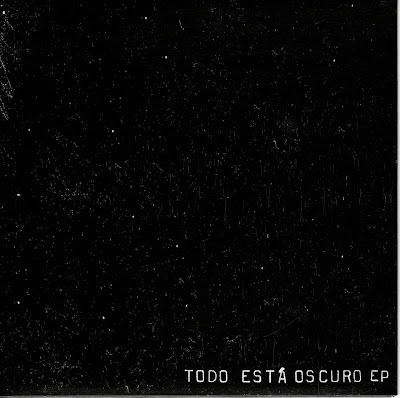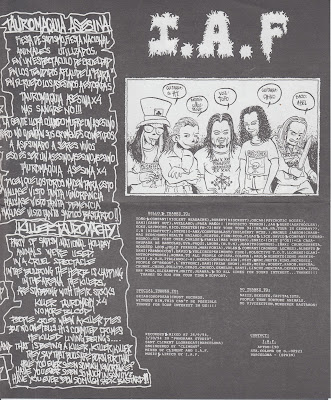As I remember, hazily I have to admit, in my tiny 00's mind, a large part of the Spanish scene very much revolved around neocrust. It would be easy, tempting, to blame Ekkaia and, well, the state of thing had a lot to do with Ekkaia's emotional take on Tragedy's music. Was it always for the best? Fuck no. Interestingly there is a still an "emocrust" scene in Spain so that the style never really went away over there whatever one might think about it. But there was something else brewing in Barcelona and, although I only paid limited attention to it at the time - what with being busy keeping track of all the booming stenchcore bands - it proved to be highly influential, if not pivotal in a lot of respects.
Enter Invasion (renamed Destino Final in 2008) from Barcelona, something of a cult hardcore band whose influence, sonic, inventive and aesthetic, can still be felt to this day. My roommate at the time was a massive fan (he also overplayed Criminal Damage, No Hope For the Kids and Lebenden Toten, bands that truly left a mark on those years) and, if I was not as enthused as he was, I could get the appeal: mean, snotty, raw hardcore punk with a distinctly raging Spanish feel, both old-school and yet modern, or rather a modern vision of old-schoolness. It opened a lot of doors well beyond the Spanish confines (and certainly helped putting La Vida Es Un Mus on the punk map) and I see today's band Atentado as a spawn of that same spirit and creative intention.
It was however not the only context the band grew from. A very raw primitive brand of Discharge-loving (noise not) music appeared in the early 00's whose most significant representatives were Destruccion. They are something of a legendary band these days (we all have our own self-created legends I suppose) for their famous song "Te amo d-beat" that everyone knows and loves or at least pretend to not to lose any punk point in my presence. At a time when Swedish discore had lost most of its contenders and when most bands were looking for a more polished, heavier, "metal" production (because neocrust), Destruccion, possibly as an answer, went in the exact opposite direction carrying the torch of the primal rabioso noisy hardcore sound that Spain was renowned for in the 80's.
Destruccion was d-beat raw punk at its most literal. The most obvious reference was MG15, one of Europe's most convincing - and stripped to the bone - love declaration to Discharge from the 80's but the band more globally owed to the Spanish hardcore wave of Shit SA, Atack, Antidgmatikss or the unlistenable Delirium Tremens. Destruccion, and shortly after the even more minimal Firmeza 10, epitomised a primitive d-beat sound that suited perfectly the Spanish language and it is barely a surprise that many Spanish-speaking hardcore bands would be influenced by these bands, not necessarily their music but at the very least their concept. To be honest, I cannot say I was totally taken by Destruccion when it came out at the time but I was probably missing the point or just lacking in knowledge to really "get it". In the 90's there would be acts like Angry Mob and Mobcharge that worked faithfully on the d-beat (both of them had the Becerra brothers from Violent Headache at the helm), the former flirting with the "just-like-Discharge" philosophy while the latter were clearly very close to what we have to come to conceptualize as "d-beat raw punk" in the wake of Disclose and can be seen as modest precursors in that respect.
This Ep was actually the first release of Discos Enfermos, now an established label expert in offering top notch raw punk (notably en español), as a co-release with Crust As Fuck Records. Atentado would release a full Lp in 2012 on La Vida Es Un Mus that was something of a disappointment as the Ep format proved to be far more suited to their primal d-beat approach. If you have five minutes to spare and you enjoy Discharge Todo está oscuro should delight you during your fag break.





















































